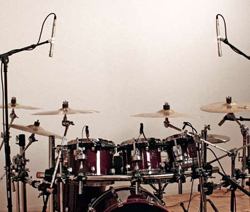Anyone that ‘s ever done studio recording has undoubtedly thought, “These mics sound fantastic.”
“Why don’t we use them for recording live?” The quick answer is, “sure they’re used – sometimes.”
However, there are a few good reasons we don’t see high-end studio-caliber microphones on everything on the stage.
First, reliability. Many studio mics (mainly ribbon and condenser designs) aren’t designed to withstand the mayhem of a live stage or tour.
It doesn’t take much to knock a capsule or ribbon out of alignment and make it work somewhat less than perfect.
Plus, the smoky environment of some stages (thanks to smoke machines or the smokers in the audience) can have a deteriorating effect on sound quality over time.
Second, many live sound practitioners don’t want to vary from the mics they’re used to because they don’t know exactly what to expect from something different, even if they understand it might produce a better result.
It’s human nature, and the same thing happens with engineers in the studio, who are also as reluctant to make changes unless they absolutely have to.
And third, in many cases high-end mics don’t really make that much of a difference in a live environment, especially one with loud stage volume.
More leakage due to a wider pickup pattern can sometimes negate any increases in quality (although at least you’ll have some good sounding leakage).
Where It Matters
While high-end mics may not make much of a difference in certain live applications, there are a few where they can shine.
Cymbals: This is the place you’ll see mics by Audio-Technica, Neumann, Bock, Peluso, Shure, Mojave Audio and others more often than on any other instrument.
The reason? Condenser mics have a very fast response, which is a perfect match for capturing the transients of drums and cymbals.
While in the studio these mics are usually used as overheads to capture more of the sound of the entire kit, on stage they’re used more to capture the cymbals in order to keep the leakage to a minimum, as illustrated above.
Acoustic Instruments: Condenser mics love acoustic instruments as long as leakage isn’t a factor.
They’re a good option for things like an unplugged portion of a set, or with an all acoustic act. Both large and small diaphragm condenser mics provide a fullness that’s tough to achieve with dynamics.
















